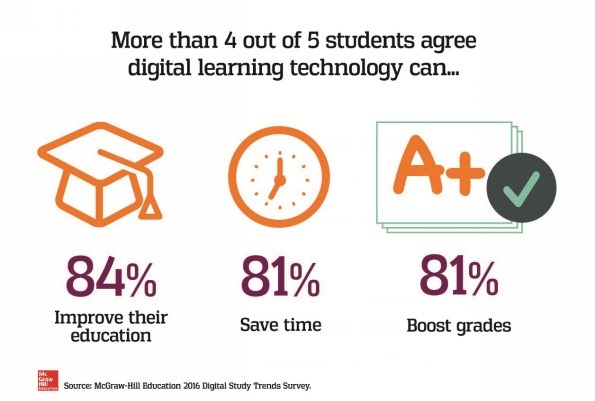
Computer-Assisted Instruction Teaching Technique: A Complete Guide
In this technologically advanced era, young learners prefer to learn via digital teaching and learning processes rather than orthodox textbook learning. According to Mcgraw-Hill education, 4 out of 5 students prefer to learn via digital learning mediums and they believe it helps them to score well also.

In recent years, there has been a growing trend of computer-assisted instruction (CAI) in education. CAI refers to the use of computers to present educational material in a way that is interactive and engaging for students. This type of instruction has been shown to improve academic performance and increase retention rates.
With the increasing use of technology in society, it is no surprise that CAI is becoming more popular in schools and universities.
CAI (Computer-Assisted Instruction) is an interactive instructional technique that uses technology to deliver instruction and feedback to students. CAI can be used in a variety of ways, such as providing practice with concepts and skills, providing feedback to students, and assessing student learning.
It has been considered to be an effective tool for teaching various subjects, such as reading, math, and science. In addition, CAI can be used to support students with special needs, such as those with learning disabilities or English language learners.
If you’re an aspiring teacher or experienced teacher who wants to Master of Arts in teaching by learning to engage your students and provide them with interactive instructional technique, then CAI may be a good option for you. Keep reading this guide to get a comprehensive overview of CAI, its benefits, and its potential to revolutionize education.
What is CAI?
Computer-assisted instruction (CAI) is a teaching and learning process through the use of computers to present instructional material in an interactive and engaging way. This form of instruction allows students to explore and practice skills, concepts, and tasks without the guidance of a teacher. By combining the power of technology with traditional learning, CAI enables students to learn at their own pace and in different ways.
CAI can take many different forms and involve various kinds of media. For example, it may involve the use of multimedia presentations, simulations, and computer games. In addition, it may incorporate virtual reality or augmented reality in an immersive educational environment. Whatever form it takes, CAI uses technology to convey educational content in a way that engages students and enhances their knowledge and understanding.
How can CAI help students?
CAI can be an effective tool for teaching students of all ages. By providing individualized instruction and feedback, CAI can help to ensure that students are able to master the material and achieve their learning goals.
It can also be used to differentiate instruction for students with diverse learning needs, such as students with learning disabilities or English language learners. CAI can ensure that students are able to practice essential skills and concepts by providing students with frequent opportunities to practice and apply their knowledge.
CAI can also help students are able to master the material and retain the knowledge it can also help to make the learning experience more engaging and enjoyable by providing interactive activities that can draw students in and keep them focused on the material.
There have been various research studies on the effectiveness of CAI. One study looked at the effects of CAI on the math achievement of middle school students. The study found that students who used CAI for math instruction improved their math scores significantly more than students who did not use CAI. Another research study looked at the effects of CAI on the reading achievement of elementary school students.
This study found that students who used CAI performed significantly better on standardized reading tests than students who did not use CAI. Additionally, students who used CAI reported greater enjoyment in reading and felt more confident in their reading skills.
How to Implement CAI in the Classroom?
If you are a teacher looking to implement CAI in the classroom, there are a few steps that you should take to ensure successful implementation.
- You should identify the types of CAI that you would like to use, such as games, simulations, tutorials, or assessments.
- You should identify the computers and software that you will need to facilitate the CAI
- Lastly, you should ensure that you have adequate staff support and training to help you facilitate CAI in the classroom.
Once you have the necessary materials, you should plan out how you will use CAI in the classroom, including the topics or skills that you will cover and the activities that you will use to facilitate learning. You should also consider ways to assess student learning and provide feedback to ensure that students are mastering the material.
In addition, you should also ensure that you provide students with opportunities to engage with and practice the material, in order to ensure long-term utilization and mastery of the material.
The Future of Computer-Assisted Instruction
Computer-assisted instruction is revolutionizing the way education is delivered and received. As technology advances, CAI has the potential to be used in new and innovative ways. For example, CAI could incorporate virtual or augmented reality in an immersive learning environment or be used for online courses and virtual classrooms. Additionally, advances in artificial intelligence (AI) could soon allow for personalized instruction that is tailored to the needs of each student.
Final Thoughts
Computer-assisted instruction can be a powerful tool for teachers, as it allows for individualized instruction with interactive instructional technique and feedback and can engage students more effectively than traditional lecture-based teaching methods. CAI can be used to teach a variety of subjects, such as math, science, and language arts.
Additionally, CAI can be used to support students with special needs, such as those with learning disabilities or English language learners. When implementing CAI in the classroom, it is important to ensure that you have the necessary materials, staff support, and resources in place.
As a teacher, you should plan out how you will use CAI, identify topics or skills that you will cover, and provide students with opportunities to practice the material. With these steps in place, you can ensure that CAI is an effective tool for helping your students to learn and grow, and you can also become Master of Arts of Teaching by learning this teaching and learning process mentioned above.

